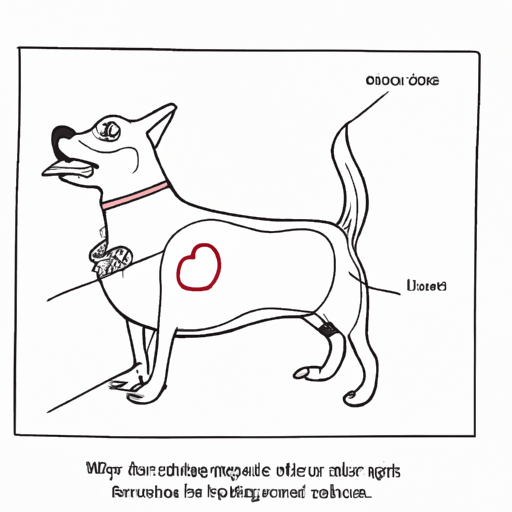Understanding the anatomy of your beloved pet can significantly help in their care and health maintenance. This article aims to explore the location of your dog’s heart and its related aspects.
1. The Heart’s Location: A Biological GPS
Just like in humans, a dog’s heart is located in its chest cavity, nestled between the lungs. It leans slightly to the left, in a position analogous to the human heart.
To locate your dog’s heartbeat, place your hand or stethoscope behind their left front leg, where the elbow touches the chest. This is where the heart’s rhythmic thumps can be felt most clearly.
2. The Canine Cardiovascular System: A Journey Through the Dog’s Heart
The canine heart, like the human heart, is a vital organ responsible for pumping blood throughout the body. It has four sections, or chambers:
- The right atrium
- The right ventricle
- The left atrium
- The left ventricle
Blood from the body flows into the right atrium, then to the right ventricle, which pumps it to the lungs. Oxygenated blood from the lungs returns to the left atrium, then to the left ventricle, which pumps it back to the body.
3. Heart Size and Breed: A Connection
The size of a dog’s heart is proportionate to its overall size. However, there are exceptions. Some small dogs have relatively large hearts, while some large dogs have relatively small hearts.
Here’s a rough guide:
| Dog Breed | Approximate Heart Size |
|---|---|
| Chihuahua | Size of a large olive |
| Labrador Retriever | Size of a large orange |
| Great Dane | Size of a small melon |
4. Heart Health: Keeping the Beat
Keeping your dog’s heart healthy involves several factors:
- Regular Exercise: Like humans, dogs benefit from regular physical activity. It keeps their heart muscles strong and their weight in check.
- Balanced Diet: Feed them a balanced diet that’s rich in nutrients and low in harmful fats and sugars.
- Regular Vet Check-ups: Regular vet visits can help detect any potential heart issues early.
5. Heart Disease in Dogs: Recognizing the Signs
Heart disease is common in dogs, particularly as they age. Symptoms may include:
- Fatigue or lethargy
- Difficulty breathing
- Persistent cough
- Loss of appetite
If you notice any of these symptoms, it’s crucial to consult with your vet immediately.
FAQs
Q: Is the dog’s heart location similar to humans?
A: Yes, a dog’s heart is located in its chest cavity, leaning slightly to the left.
Q: Can I feel my dog’s heartbeat?
A: Yes, place your hand or a stethoscope behind their left front leg where it touches the chest.
Q: How can I keep my dog’s heart healthy?
A: Regular exercise, a balanced diet, and regular vet check-ups are vital.
Q: What are the symptoms of heart disease in dogs?
A: Symptoms may include fatigue, difficulty breathing, persistent cough, and loss of appetite.



